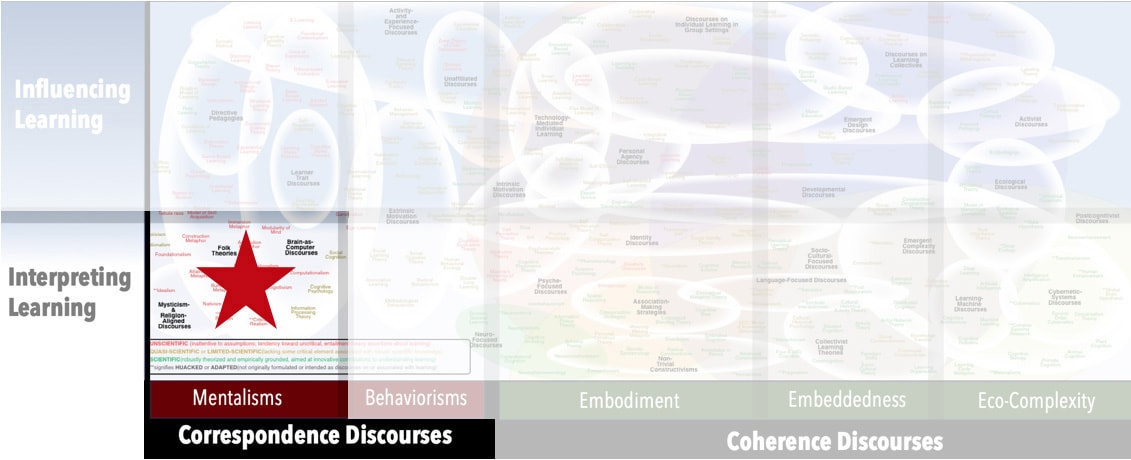The Organisation for Economic Co-operation and Development (OECD) defines three forms of learning: Formal Learning usually involves certified teachers, accredited curricula, and institutional settings. Non-Formal Learning (sometimes called Incidental Learning) refers to structured learning situations in which one or more of the elements mentioned in the previous sentence is absent. All of those elements are absent in Informal Learning, which is not oriented by or structured around explicit learning outcomes – and which, from the point of view of the learner, is never intentional.
Learn More...“Learning as acquisition” – the Acquisition Metaphor – is probably the most commonly invoked learning metaphor in English. It is evident in such phrases as “grasping the point,” “taking things in,” “getting it,” “picking things up,” “hard to swallow,” “remember this stuff,” and “cramming for the test.” It is not theoretically sophisticated, relying on the assumption that knowledge comprises externalized objects, and asserting that learning is a process of moving those objects from the outside to the inside.
Learn More...Incidental Learning refers to learning that is a “by-product” of some other activity – that is, to learning that occurs without specific motivation or focused instruction. Incidental Learning may or may not be implicit. It is typically spontaneous and unstructured. The notion was developed in acknowledgment of the great deal learned by all humans without explicit intention or instruction.
Learn More...Folk Theories exist within every realm of human engagement. They are, in effect, uncritical and often-indefensible principles of action and interpretation that are woven through everyday language and broad cultural sensibilities. In effect, most of the past 150 years of research into learning has been focused on exposing Folk Theories and exploring more conscious and scientifically robust alternatives.
Learn More...Focus
Unmediated and unintentional learning
Principal Metaphors
- Knowledge is … sea of possibilities, external liquid
- Knowing is … interpreting and/or acting in appropriate ways
- Learner is … a sponge (individual)
- Learning is … absorbing; soaking up
- Teaching is … N/A
Originated
Ancient (entrenched in the language)
Synopsis
The Immersion Metaphor is typically invoked as a means to “explain” how learners come to manifest mannerisms, habits, and sensibilities of a broader community without obvious practice or deliberate teaching.
Commentary
The Immersion Metaphor might be considered as an extension of the Acquisition Metaphor, developed to address nonconscious and nondeliberate learnings. It, of course, has no explanatory power – but can feel as though it fills a conceptual hole in a coherent way, since it shares the same core assumptions around separation of internal and external, materiality of knowledge, and so on. (See also Incidental Learning and In-/Non-Formal Learning.)
Authors and/or Prominent Influences
The Immersion Metaphor is another of those that has been evident in multiple western languages for many hundreds of years.
Status as a Theory of Learning
The Immersion Metaphor is included among Folk Theories of learning.
Status as a Theory of Teaching
In a sense, the Immersion Metaphor is the opposite of a theory of teaching. It is typically evoked to make sense of learning that happens in absence of teaching.
Status as a Scientific Theory
The Immersion Metaphor meets none of the requirements of a scientific theory.
Map Location

Please cite this article as:
Davis, B., & Francis, K. (2020). “Immersion Metaphor” in Discourses on Learning in Education. https://learningdiscourses.com.
⇦ Back to Map
⇦ Back to List

